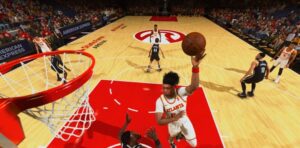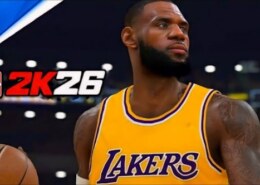With each passing year, the release of a new NBA 2K title generates a mix of anticipation and skepticism among fans. NBA 2K26 MT is no different, arriving on the heels of NBA 2K25’s mixed reception. Players have come to expect impressive graphics, robust gameplay mechanics, and immersive modes—but they’ve also grown weary of microtransactions, lack of innovation, and bugs that often linger unaddressed for months. So the question stands: is NBA 2K26 a slam dunk or just another missed opportunity?
Gameplay: Evolution or Repetition?
NBA 2K26 builds on its predecessors with a few notable changes, but whether these changes elevate the game or simply polish the old formula depends largely on your perspective.
Refined Animations and Physics
One of the most noticeable improvements is in player movement. Animations are smoother, and player momentum feels more realistic. NBA 2K26’s motion engine has been upgraded to offer better foot planting and more natural movement. Players no longer slide across the court as if skating on ice—a long-standing issue that finally seems addressed.
Post-play has been reworked too. The new “Advanced Footwork System” allows for more nuanced spins, drop-steps, and fakes in the paint. Big men finally feel dominant again, and it adds much-needed diversity to offensive strategies.
AI and Defensive Logic
CPU AI has seen marginal improvements. Defenders rotate better on switches and react more realistically to help situations. However, the AI is still prone to occasional lapses—leaving corner shooters wide open or failing to close out on time.
On-ball defense feels tighter and more responsive than before, with new defensive stick controls that allow players to apply pressure without lunging or getting blown by. It’s a welcome change, though elite dribblers can still abuse certain animations.
Shooting and Timing
Shooting has been adjusted with a new shot meter and timing window based on player fatigue, shot type, and defensive pressure. This makes every shot feel more dynamic but also more punishing for casual players. Veterans will likely enjoy the added skill gap, but newcomers may find the learning curve frustrating.
Game Modes: Familiar Territory with a Few Twists
MyCAREER: A Fresh Story with Old Problems
MyCAREER has always been the crown jewel of NBA 2K, offering a single-player journey through the league. This year’s story mode, titled “Rise from the Shadows,” follows a second-round draft pick trying to make it big while dealing with off-court drama and expectations.
The narrative is more grounded compared to past entries, avoiding outlandish celebrity cameos and focusing on locker room dynamics and coach relationships. However, the biggest flaw remains: excessive grinding. Progression feels slow unless you spend VC (Virtual Currency), and the path to upgrading your player is heavily monetized. Despite a compelling story and improved dialogue choices, the push toward microtransactions hampers the experience.
The City: Bigger, Prettier, Still a Grind
The City returns and is now even larger, with expanded districts, new events, and a cleaner interface. Graphically, it’s stunning. The courts, murals, and lighting effects create a vibrant urban playground.
But as with previous years, traversal is tedious. Even with fast-travel options and vehicles like skateboards and bikes, it often feels like the game prioritizes form over function. The City is filled with activities, but many are superficial or paywalled. The reward structure continues to favor players who invest real money, which dilutes the excitement of organic progression.
MyTEAM: Evolution or Exploitation?
MyTEAM continues to offer deep customization and team-building, with new card types and dynamic challenges. One of the best new features is “Era Challenges,” which let you build a team to take on historical squads in decade-themed arenas with era-specific filters.
However, MyTEAM still suffers from its biggest flaw: aggressive monetization. Packs remain expensive and rarely reward the player with top-tier cards unless you’re lucky or wealthy. The grind-to-play vs. pay-to-win dynamic is as strong as ever. Players on a budget will have to dedicate hundreds of hours to stay competitive.
Franchise Modes: Sim Heads Rejoice (Mostly)
MyNBA (on next-gen) introduces a new feature called “Team Chemistry 2.0,” adding more meaningful consequences to trades, morale, and coaching decisions. Scouting and draft systems have been slightly improved, though they still feel too familiar if you’ve played recent iterations.
The addition of legendary coaching staff—like incorporating Phil Jackson or Pat Riley into your franchise—adds a nice historical flavor, especially for longtime fans.
Still, the mode could use more innovation. Many menus and systems feel untouched since NBA 2K22. It’s polished, sure—but it lacks a true leap forward.
Graphics and Presentation: Top of the League
Visually, NBA 2K26 is outstanding. Player models are highly detailed, from sweat glistening on their foreheads to accurate tattoos and accessories. Arena lighting has been revamped, crowd animations feel livelier, and halftime shows are more dynamic.
The commentary team also feels fresher, with more context-aware analysis and new voice talent rotating in depending on game mode and team. It adds an immersive, broadcast-style polish that few sports games can rival.
Soundtrack and Audio: A Mixed Playlist
NBA 2K26’s soundtrack features a diverse mix of hip-hop, R&B, international artists, and even a few rock tracks. While some fans enjoy the mainstream hits, others may find the playlist repetitive after extended playtime.
The good news is that players can customize playlists or mute songs entirely. Courtside audio—from squeaking shoes to rim rattles—sounds crisp and adds authenticity to the gameplay.
Monetization: The Elephant in the Room
No NBA 2K review would be complete without addressing microtransactions. Virtual Currency (VC) dominates almost every mode—MyCAREER, MyTEAM, even cosmetic items in The City. The fact that performance progression is tied so heavily to VC remains the game’s biggest drawback.
While it’s possible to grind your way through, the grind is intentionally steep. It feels as if the game is punishing players who don’t pay, rather than rewarding those who do. This design choice overshadows many of the game’s finer improvements.
Performance and Bugs: Smoother but Not Flawless
Performance on next-gen consoles (PS5 and Xbox Series X) is generally solid. Load times are quick, frame rates stable, and crashes rare. However, legacy bugs persist—such as players clipping through each other, scoreboard glitches, and occasional disconnections from online servers.
2K has committed to more frequent patches and community feedback loops this year, which could help alleviate some frustrations. But players have learned not to hold their breath when it comes to 2K fixing bugs in a timely manner.
Verdict: Slam Dunk or Missed Opportunity?
NBA 2K26 is both. On one hand, it’s a visually stunning, mechanically refined basketball sim with more depth than almost any other sports game on the market. On the other hand, it remains shackled by aggressive monetization, old bugs, and a content loop that heavily favors pay-to-win mechanics.
If you’re a hardcore fan who’s been playing the series for years, NBA 2K26 offers enough new features to warrant a purchase—especially if you’re into MyCAREER or Franchise Mode. If you’re more casual or wary of microtransactions, this entry might feel like another missed opportunity to cheap NBA 2K26 MT prioritize players over profits.
Finally
NBA 2K26 shines in many areas but ultimately falls just short of greatness—again. Whether it’s a slam dunk or a missed opportunity depends on what kind of player you are… and how much you’re willing to pay.

